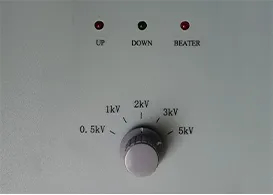 English
English


Testing Techniques for Transformer Load Loss Evaluation
Understanding Transformer Load Loss Testing
Transformers are crucial components in electrical power systems, serving to step up or step down voltage levels for efficient transmission and distribution of electricity. Among the various performance metrics that evaluate transformer efficiency, load loss is a key indicator that directly affects operational costs and energy efficiency. This article delves into the importance of transformer load loss testing, its methodologies, and implications for both manufacturers and energy providers.
What is Load Loss?
Load loss, often referred to as copper loss, occurs when a transformer is under load—meaning it is actively supplying electrical energy to the system. This loss primarily results from the resistance in the windings of the transformer and is proportional to the square of the current flowing through them. The understanding and quantification of load losses are essential for evaluating the efficiency of transformers, as they represent power that is converted to heat rather than used for productive work.
Importance of Load Loss Testing
1. Efficiency Evaluation The primary reason for conducting load loss tests is to assess the efficiency of a transformer. By understanding the load losses, manufacturers can optimize design and materials to minimize these losses, leading to reduced operational costs.
2. Operational Reliability Excessive load losses can lead to overheating and reduced lifespan of transformers. Regular testing allows for early identification of issues, ensuring that transformers operate within safe thermal limits.
3. Regulatory Compliance Many jurisdictions impose stringent regulations regarding energy efficiency. Accurate load loss testing helps manufacturers comply with these regulations, thereby avoiding penalties and ensuring market competitiveness.
transformer load loss test

4. Financial Implications High load losses can translate into increased energy costs for utilities and end-users. By minimizing these losses, companies can achieve significant savings over time, which is especially important in a landscape where energy prices are continuously on the rise.
Methodologies for Load Loss Testing
Load loss testing can be performed using several methodologies, but the most common is the short-circuit test. This involves applying a voltage to one side of the transformer while the other side is short-circuited. The current is then increased until rated short-circuit current is reached, allowing for a direct measurement of power loss within the windings.
Another methodology is the open-circuit test, which primarily assesses core losses but can provide supplementary data regarding the transformer’s overall efficiency. It is crucial for manufacturers to conduct these tests in a controlled environment to ensure accuracy in measurements and reliability in results.
Implications for Manufacturers and Utilities
Manufacturers benefit from understanding load losses. By optimizing design and material selection based on testing results, they can produce more efficient transformers, thus enhancing their market appeal and compliance with energy regulations. For utilities, the implications of load loss testing extend beyond mere financial efficiency; they directly impact grid reliability and sustainability. Reducing load losses contributes to lower greenhouse gas emissions and aligns with global goals for energy consumption reduction.
Conclusion
In conclusion, transformer load loss testing is an essential practice that plays a significant role in both the efficiency and reliability of electrical power systems. As energy demands increase and regulatory standards tighten, the importance of accurately measuring and minimizing load losses will only grow. By investing in advanced testing methodologies and optimizing design processes, manufacturers and utilities can ensure that transformers not only meet performance expectations but also contribute to a more sustainable energy future.
-
Differences between open cup flash point tester and closed cup flash point testerNewsOct.31,2024
-
The Reliable Load Tap ChangerNewsOct.23,2024
-
The Essential Guide to Hipot TestersNewsOct.23,2024
-
The Digital Insulation TesterNewsOct.23,2024
-
The Best Earth Loop Impedance Tester for SaleNewsOct.23,2024
-
Tan Delta Tester--The Essential Tool for Electrical Insulation TestingNewsOct.23,2024





